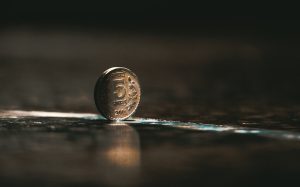Forex trading is a fast-paced and volatile market that involves buying and selling currencies. In this market, slippage is a common phenomenon that traders face when executing trades. Slippage is the difference between the expected price of a trade and the actual price at which the trade is executed. In other words, slippage occurs when there is a difference between the price at which a trader wants to execute a trade and the price at which it is actually executed.
Slippage can occur in both directions, i.e., positive or negative. Positive slippage occurs when a trader gets a better price than expected or requested. On the other hand, negative slippage occurs when a trader gets a worse price than expected or requested. Generally, negative slippage is more common than positive slippage in forex trading.
Slippage can occur in various market conditions, including high volatility, low liquidity, and news releases. In high volatility conditions, the market can move quickly, causing a significant difference between the expected and actual price of a trade. Similarly, in low liquidity conditions, there may not be enough buyers or sellers to match the orders, resulting in slippage. News releases, such as economic data releases, can also cause slippage as traders rush to execute trades based on the new information.
Slippage can have a significant impact on a trader’s profitability, especially if the trader uses high leverage. High leverage amplifies the effect of slippage, causing larger losses or smaller profits. Slippage can also affect a trader’s strategy, as it may result in the trade being executed at an unfavorable price, leading to a loss.
To mitigate the impact of slippage, traders can use various strategies. One strategy is to use limit orders, which allow traders to set a specific price at which they want to execute their trades. This strategy can help traders avoid negative slippage and get a better price than the market price. However, this strategy may also result in missed opportunities if the market moves quickly in the opposite direction.
Another strategy is to use stop-loss orders, which allow traders to limit their losses in case the market moves against their trades. Stop-loss orders can help traders avoid significant losses due to slippage, especially in high volatility conditions. However, stop-loss orders can also result in premature exits if the market quickly reverses after hitting the stop-loss level.
In conclusion, slippage is a common phenomenon in forex trading, and traders need to be aware of its impact on their profitability. Slippage can occur in various market conditions, and traders need to use appropriate strategies to mitigate its impact. Limit orders and stop-loss orders are two common strategies that traders can use to manage slippage. Finally, traders should also be aware of the risks of high leverage, which can amplify the effect of slippage and result in significant losses.






